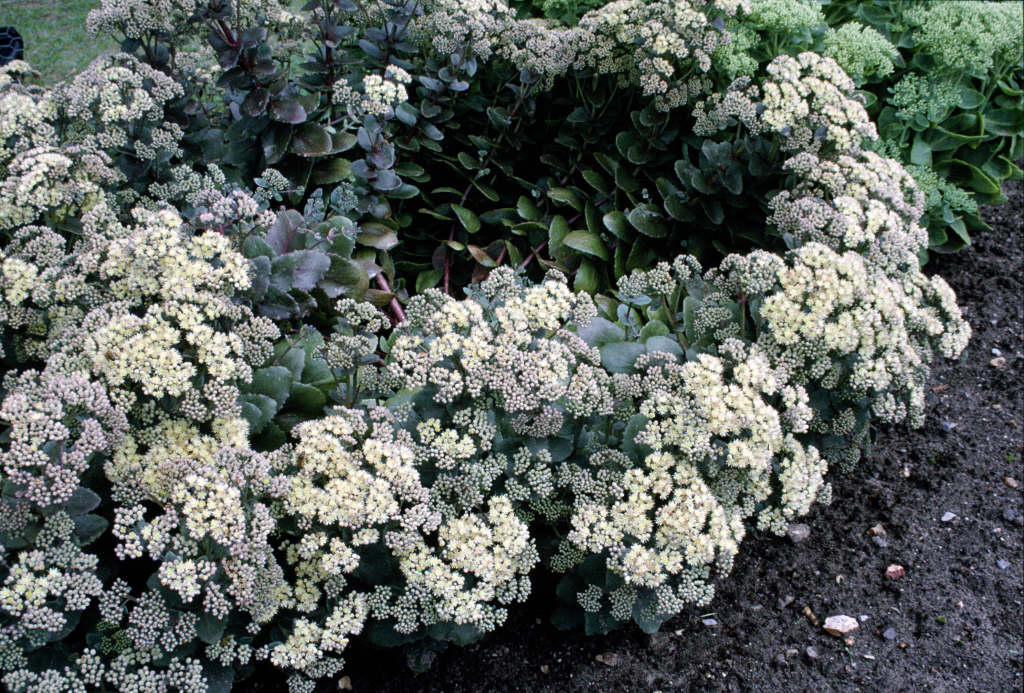Hylotelephium telephium subsp. ruprechtii
Ruprecht's orpine
A clump-forming plant to 40cm tall, with pinkish stems bearing fleshy rounded grey-purple leaves flushed pink, and flat heads of small, yellowish-white flowers tinged with pink, in late summer to autumn
Other common names
Ruprecht stonecropSynonyms
Sedum 'Eleanor Fisher'Sedum maximum subsp. ruprechtii
see moreSedum ruprechtii
Sedum telephium subsp. ruprechtii

Buy this plant
Size
Ultimate height
0.1–0.5 metresTime to ultimate height
2–5 yearsUltimate spread
0.1–0.5 metresGrowing conditions
Moisture
Well–drainedpH
Alkaline, NeutralColour & scent
| Stem | Flower | Foliage | Fruit | |
| Spring | Green Grey Silver | |||
|---|---|---|---|---|
| Summer | Pink White | Green Grey Silver | ||
| Autumn | Pink White | Green Grey Silver | ||
| Winter |
Position
- Full sun
Aspect
South–facing or West–facing
Exposure
Exposed or Sheltered Hardiness
H7Botanical details
- Family
- Crassulaceae
- Native to GB / Ireland
- No
- Foliage
- Deciduous
- Habit
- Bushy
- Genus
Hylotelephium are succulent perennials with heads of small star-shaped flowers in summer to autumn. They are sometimes included within the genus Sedum
- Name status
Correct
- Plant range
- NE Europe
How to grow
Cultivation
Grow in moderately fertile, well-drained, neutral to slightly alkaline soil in full sun. A drought-tolerant plant, see hylotelephium cultivation for further advice
Propagation
Propagate by division in spring. Propagate by softwood cuttings of non-flowering shoots in early summer
Suggested planting locations and garden types
- City and courtyard gardens
- Coastal
- Cottage and informal garden
- Gravel garden
- Patio and container plants
- Rock garden
- Wildlife gardens
- Garden edging
- Flower borders and beds
Pruning
For bushy, compact plants, cut back the new stems by half in late May, this method is called the Chelsea Chop. Or cut back after flowering, and during border tidy ups in late winter before new growth emerges; seedheads can be left to overwinter
Pests
May be susceptible to slugs, snails and vine weevil
Diseases
May be susceptible to fungal and bacterial crown and root rot on wet soils, or powdery mildews on very dry soils
Get involved
The Royal Horticultural Society is the UK’s leading gardening charity. We aim to enrich everyone’s life through plants, and make the UK a greener and more beautiful place.